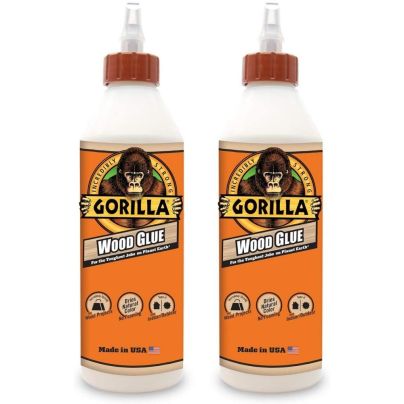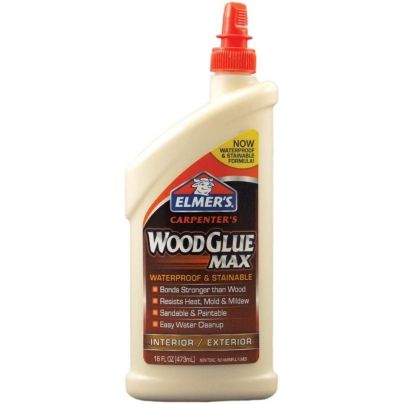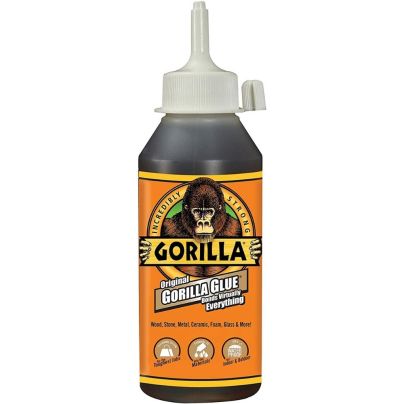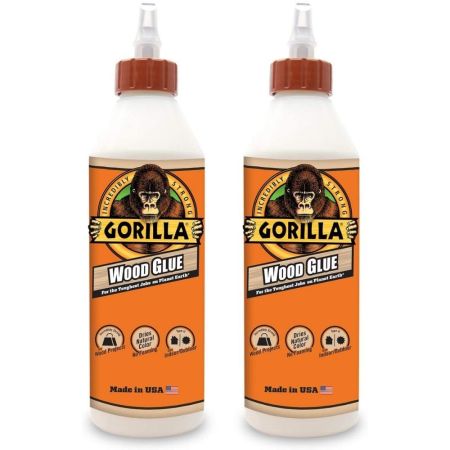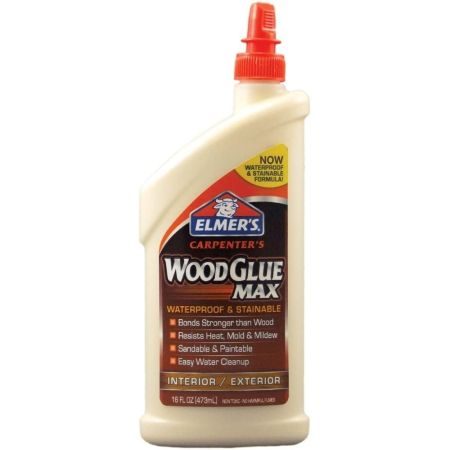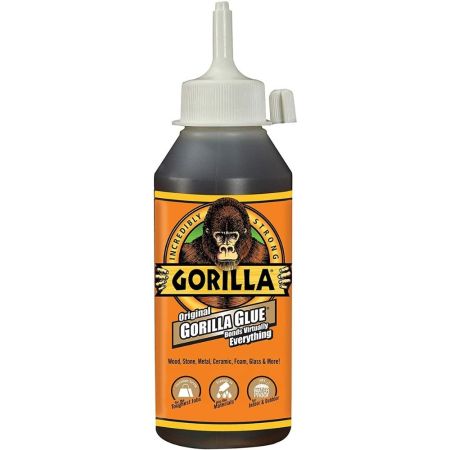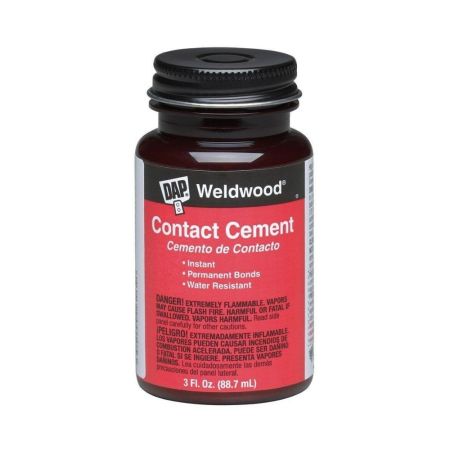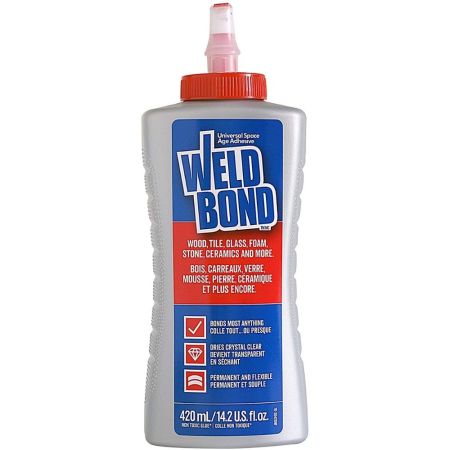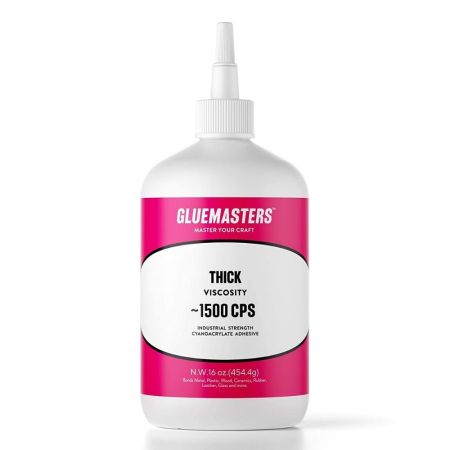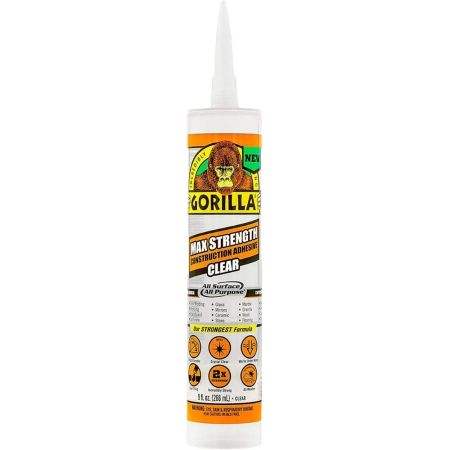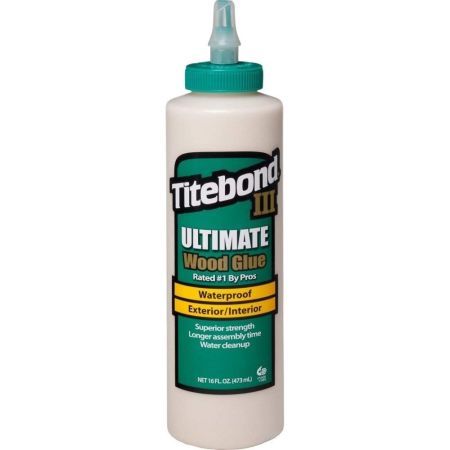We may earn revenue from the products available on this page and participate in affiliate programs. Learn More ›
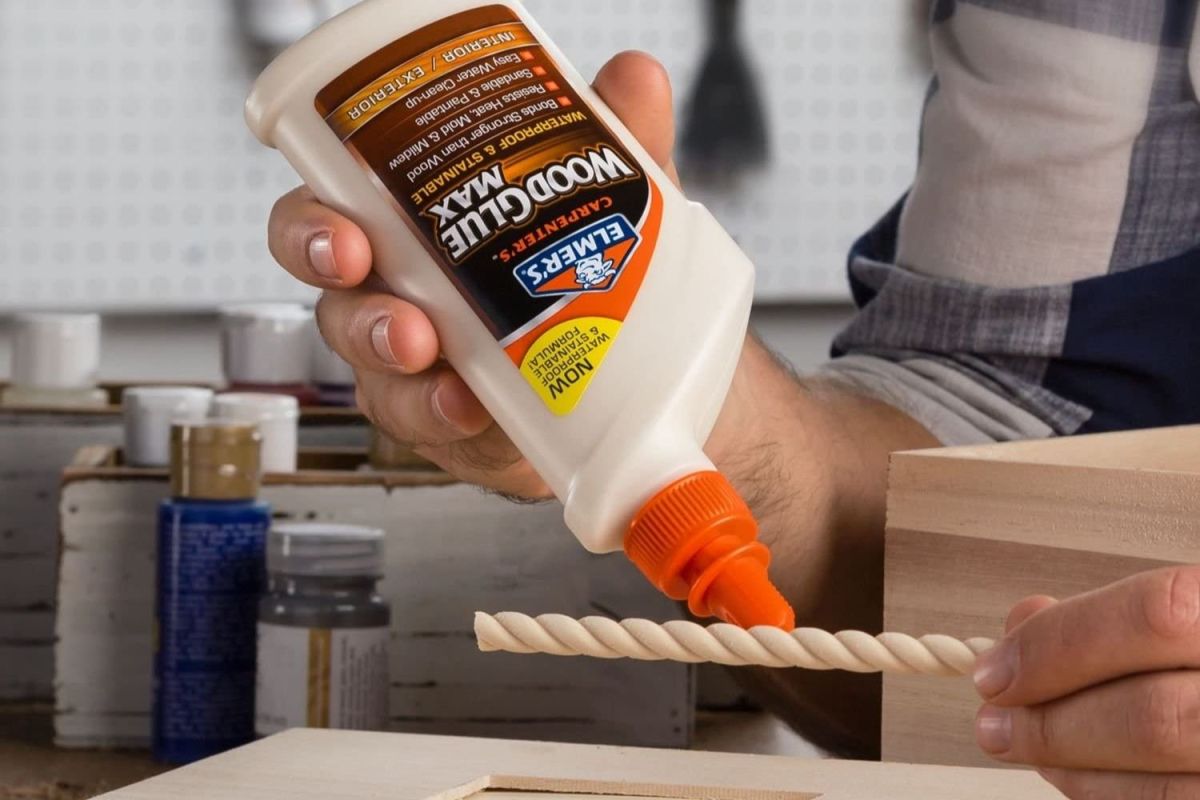
Although particle board can be one of the more affordable materials to use for making furniture and even countertops, use of the material in projects requires a quality glue that can join multiple pieces together or even attach an attractive veneer to its surface.
Glues suitable for particle board include standard wood glue, polyurethane super glues, and cement glues that instantly bind two materials together. These powerful glues create a bond that will stay in place even when the wood around it does not.
This guide will uncover what features are crucial to consider when selecting the best glue for particle board and review some of the top choices, depending on the particle board project.
- BEST OVERALL: Gorilla Wood Glue
- BEST BANG FOR THE BUCK: Elmer’s E7310 Carpenter’s Wood Glue Max
- BEST POLYURETHANE: Gorilla 5002801 Original Waterproof Polyurethane Glue
- BEST CONTACT CEMENT: DAP Contact Cement
- BEST CLEAR-DRYING: Weldbond 8-50420 Multi-Purpose Adhesive Glue
- BEST QUICK-DRYING: GLUE MASTERS Thick 1500 CPS Viscosity Glue
- BEST HEAVY-DUTY: Gorilla Max Strength Clear Construction Adhesive
- ALSO CONSIDER: Titebond 1414 Titebond III Ultimate Wood Glue
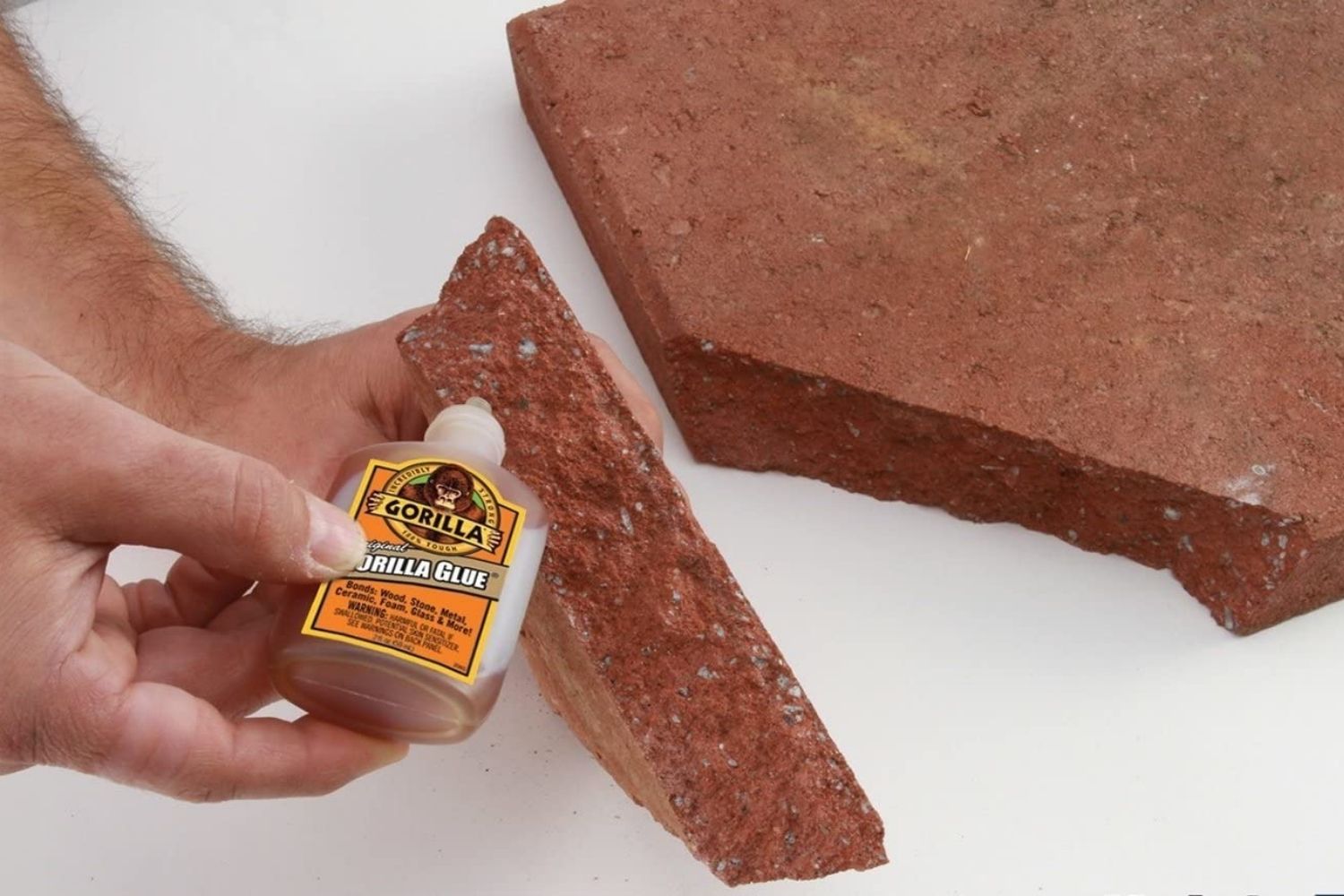
What to Consider When Choosing the Best Glue for Particle Board
Glues suited for use with particle board come in a surprising number of types. Ahead, learn about each type and other crucial factors to consider when selecting a glue for particle board.
Type
- Polyvinyl acetate. PVA is more commonly known as wood glue and comes in two formulas—a white and a yellow—with the latter being the stronger of the two. This type of glue comes in a plastic bottle with a tapered top that users can open and close. Application involves squeezing the bottle. PVA has a long dry time compared to other glues, requiring the two pieces to be held in place with clamps until the glue sets.
- Polyurethane glue. Like PVA, polyurethane glue comes in a plastic squeeze bottle. It’s more versatile than wood glue and can bond to stone, concrete, and ceramics as well as wood. Though not quite as strong as PVA, it’s stronger than wood, which will break long before the bond does. As an added benefit, polyurethane glue also is waterproof, which makes it a versatile option for use with more than just particle board.
- Contact cement. Contact cement is specially formulated to glue pieces of laminate to a particle board. It works by spreading the cement on both surfaces, waiting for the glue to set until it’s tacky, and then pressing the surfaces together. The surfaces make an instant bond, eliminating the need to clamp the materials together. Contact cement is designed to cover broad surfaces, so it comes in larger containers. Spread it quickly and evenly with a paintbrush or roller.
- Urea-formaldehyde. Sometimes referred to as plastic resin, urea-formaldehyde is a powerful glue that is renowned for its ability to hold laminate to wood without pulling away. Like contact cement, it is designed to cover a large amount of surface area; however, it does not create an instant bond, so the user can maneuver the two pieces after joining them.
Water Resistance
Some PVA glues and most polyurethane glues are suitable for outdoor use. While this is ideal for gluing together outdoor furniture and other items exposed to the elements, it’s rare to find particle board that sees outdoor use. Particle board is made of sawdust, wood chips, and glue. When it gets wet, it absorbs the liquid and puffs up like a sponge.
While water resistance might be a nice quality for a general-purpose glue that might work for more than one project, it’s not a crucial factor for gluing together particle boards. That said, many glues that are suitable for particle board also work with other materials, so a formula’s water resistance might be a consideration.
Temperature
It’s important to pay attention to the temperatures a glue can tolerate. While it’s doubtful that a glue will face extreme temperatures with applications that involve particle board, it is important to pay attention to the temperature ranges required for applying the glue. For example, some glues have a minimum temperature of 45 degrees, below which they will not set and dry properly.
Make sure to check this range to see if a glue requires a minimum temperature (typically 50, or even 60, degrees Fahrenheit). Most glues should not be stored in freezing temperatures, as this can ruin their consistency and bonding agents.
Visibility
Glues dry to different finish colors that make them more or less visible. Common finish colors include white, yellow, and clear. White is ideal when attaching white melamine particle board pieces together since it blends with the surface of the board. Glues that dry to a yellow finish match the natural color of wood, while clear is ideal for making the glue as inconspicuous as possible. While finish color is important, keep in mind that it is possible to paint or stain many glues to match the color of the project material.
Thickness
A glue’s thickness determines how easy it is to use. A viscous type, such as wood glue, will better grip material when first making the connection without dripping or running off like a thinner glue might. This makes thicker glue ideal for use on pieces that sit vertically, where running and dripping are potential problems.
Thicker glues are more likely to squeeze out of the joint between two pieces when pressing and holding them together with a clamp. This requires the user to wipe away excess with a rag.
It is easier to apply smaller amounts with thinner glues than it is with thicker ones, so thinner types work better for smaller repairs such as reattaching a chipped piece of veneer to particle board. Thinner glues also tend to dry more quickly than thicker formulas, which makes them a good choice for gluing together two pieces that the user must hold manually.
Drying Time
A glue’s drying time determines how long someone must hold the two pieces together—either manually or with clamps—before the glue can hold the two together on its own. Drying times for glues can vary dramatically, from instantaneous to several hours.
For glues that require a significant amount of time to bond (15 minutes and up), DIYers must clamp the two pieces together to ensure a strong bond. Any movement between the pieces during this drying period could compromise the strength of the connection. If it’s not possible to hold the two pieces together with clamps, then it is best to choose a glue that dries quickly or on contact.
While many people prefer glues that offer an instant bond, they can prove difficult to work with. Glues with a longer drying time allow the user to align materials after making the connection. Instant bond glues, such as super glue and contact cement, do not allow the user to adjust the pieces once the connection is made. There’s also the danger of gluing one’s fingers to the piece.
Our Top Picks
The list ahead takes into account the above factors to narrow the field of glues down to top picks. These glues are suited for various projects involving particle board, such as joining pieces together for furniture or attaching a melamine veneer.
Best Overall
Gorilla Wood Glue
See ItWith its ease of use, coupled with a dry time that is forgiving but fast, this PVA Gorilla wood glue is a great all-around option for joining particle board pieces. Gorilla wood glue comes in a squeeze bottle with a tapered tip to help users apply the right amount. It dries in 20 to 30 minutes, giving a little wiggle room to make minor adjustments and situate the clamps once the pieces come together.
This glue cures in about 24 hours. It also is water resistant. Though not helpful for particle board projects, water resistance adds to the glue’s versatility for a range of uses. Gorilla wood glue dries to a natural color that blends nicely with wood. This glue comes in two 18-ounce bottles.
Best Bang for the Buck
Elmer’s E7310 Carpenter’s Wood Glue Max
See ItThis PVA glue from Elmer’s offers an exceptional value at a low cost in a large 16-ounce bottle. Though not as strong as some other types of glue, it’s stronger than wood, ensuring it will endure even if the wood around it does not.
The wood glue comes in a squeeze bottle with a tapered applicator that helps apply it precisely with little mess. This glue includes actual wood fibers in its mix, so it is both paintable and stainable once fully cured, which takes 24 hours. As with other PVA glues, Elmer’s has a 20- to 30-minute dry time and requires clamping for a secure bond.
Best Polyurethane
Gorilla 5002801 Original Waterproof Polyurethane Glue
See ItThis Gorilla polyurethane glue can join particle board and a host of other materials, making it an excellent product to have on hand for various household needs. In addition to wood, the glue can bond stone, metal, ceramic, foam, glass, and concrete, plus other materials. The product comes in a squeezable bottle with a small applicator for the kind of precise application that smaller gluing jobs require.
This waterproof glue requires a longer drying time than many, and the user needs to clamp the two pieces together for 2 hours to create a strong bond. It cures to full strength in about 24 hours. Once dry, this versatile glue is sandable, paintable, and stainable. Gorilla polyurethane glue comes in 8-ounce bottles.
Best Contact Cement
DAP Contact Cement
See ItAdhering veneer to melamine or other types of particle board requires a glue that goes on easily over a large surface area. This DAP Weldwood contact cement will do the trick. It consists of a rubber adhesive that is spreadable with a paintbrush or roller. To use, apply the glue to the two opposing surfaces, then press the two surfaces together to join them instantly.
Beware, though: Once the two pieces meet, they create an instant and strong bond with no room for even minor adjustments. The rubber cement cures to full strength in just 20 minutes. DAP Weldwood contact cement comes in 3-ounce bottles and 32-ounce cans for larger applications. This glue will bond particle board, wood, metal, glass, plastic, and other materials.
Best Clear-Drying
Weldbond 8-50420 Multi-Purpose Adhesive Glue
See ItFor some projects, seeing the glue, no matter how natural it might look when dry, is not an option. This multipurpose adhesive from Weldbond is as strong as other types of glue for particle boards but dries to a less conspicuous crystal clear finish. It comes in a squeeze bottle with a narrow applicator that minimizes mess by allowing the user to get the glue exactly where it needs to go.
With its 1-hour dry time, which is longer than other glues, clamping materials after applying Weldbond leads to the best results. The glue cures in 24 hours. In addition to drying clear, this glue is a truly versatile option. It will bond a variety of materials and can go on with a roller to function as a sealant or be added to concrete, plaster, and stucco to act as a bonding agent.
Best Quick-Drying
GLUE MASTERS Thick 1500 CPS Viscosity Glue
See ItSometimes clamping two pieces of particle board together is just not practical. This thick adhesive from GLUE MASTERS is a better option thanks to its use of cyanoacrylate resin, which sets in just 60 seconds. The quick drying time is a plus when making small repairs and completing projects that require holding particle boards together manually.
In addition to joining wood, this versatile glue works for other materials such as rubber, metal, plastic, and fabric, so it is a good glue to have on hand in a pinch. With its thick consistency, this glue is easier to use than thinner glues that can run and drip. GLUE MASTERS Thick Viscosity comes in 16-ounce or 8-ounce containers.
Best Heavy-Duty
Gorilla Max Strength Clear Construction Adhesive
See ItWith its strong bonding ability—twice as strong as standard Gorilla construction adhesive—and ability to grab on contact, this Max Strength glue comes in handy for heavy-duty jobs. Use it to bond particle board and a host of other materials. The product comes as a caulk gun with a customizable tip for application. Simply cut the pointed end of the 9-ounce tube with a pair of scissors to set the diameter of the opening, then squeeze the trigger to push the glue out.
Once the materials make a connection, the glue creates a bond in just 30 seconds. This Gorilla construction adhesive, which dries clear and is paintable, is a versatile adhesive. Use it to bond wood, drywall, ceramic, concrete, and other materials together.
Also Consider
Titebond 1414 Titebond III Ultimate Wood Glue
See ItThough it’s a bit pricier than other glues for a 16-ounce bottle, this formula from Titebond can be well worth it. The glue provides a strong initial grab between two materials while still allowing some freedom to make minor adjustments once the two pieces adhere.
The waterproof product sets quickly in just 5 minutes and creates a strong bond between the pieces in only 15 minutes. Titebond comes in a squeeze bottle with a narrow opening for precise applications. A thinner consistency makes it easier to use than other glues that are more viscous, and its water resistance holds up to indoor or outdoor use.
FAQs About Glue for Particle Board
If you’re wondering how long it takes glue to dry on particle board or if you can use the glue on other surfaces, then read on for answers to these and other questions.
Q. Which glue is the best for gluing melamine to particle boards?
DAP Weldwood, which is a contact cement, is the best option for gluing melamine veneers to particle boards. Apply the glue to a broad surface with a paintbrush, and it adheres on contact.
Q. Can I use particle board adhesive on other surfaces?
Yes. Most adhesives work on a variety of other surface types, including plastics, stone, metal, ceramic, foam, glass, and concrete.
Q. How long does it take for a glue for particle boards to dry?
It depends on the type of glue. Some glues bond instantly on contact, while other glues can take several hours to dry.
Q. How do I store my glue for particle boards properly?
The best way to store glue is in a climate-controlled spot that stays as close to room temperature. Never store glue in subfreezing temperatures.
Q. How long can a glue for particle boards last?
If stored in a garage or shed, glue will last two years. However, if stored properly, glue can last for up to 10 years.
